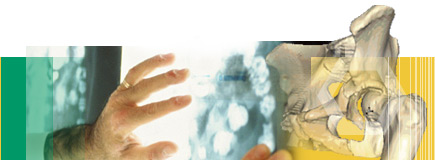 |
||
|
Digital Data Format (as per RACS DDI Options) Digital diagnostic images can be distributed in one of three formats which relates to requiements of image data size for transfer and storage: 1. DICOM lossless compliant formats achieve “lossless” compression of images, where the volume of image data is reduced (typically by a factor of 2 times), without affecting the appearance of the displayed image. Image data and quality is not lost during the compression and restoration of the image. 2. DICOM lossy format allow for a higher degree of data compression however at the cost of losing some of the image data; hence are called “lossy”. The displayed image is of lower quality than the uncompressed original. Depending on the nature of the examination, and the nature and degree of compression employed, lossy compression may or may not affect the diagnostic value of an image. 3. Non DICOM formats such as JPEG. These lower resolution images (similar to those used in digital photography) are usually intended to provide illustrative images to augment the report or provide patient education. They are lossy images, however have the advantage of being able to be rendered by a wide range of software including basic internet browsers and their small size lends itself to electronic transfer.
Images reviewed for diagnostic purposes should ideally be in DICOM compliant format (full image data set, depending on the clinical situation), or IHE PDI Compliant if distributed on portable media. While the DICOM Committee sets standards, it does not provide enforcement or possess an ability to review or monitor compliance. IHE (Integrating the Healthcare Enterprise) is an organization that brings together IT standards to support solutions to practical interoperability problems such as digital image transfer. The IHE profile for this is Portable Data for Imaging. IHE Guidelines (www.ihe.net) for PDI compliant DICOM data format and delivery are developed. CD is currently the only profile accepted. IHE PDI Extensions (current and under consideration) CD, DVD, USB SSD, Compression, Encryption, Viewer and Sending Software - hyperlinks available from: http://wiki.ihe.net/index.php?title=Radiology_Technical_Committee http://wiki.ihe.net/index.php?title=PDI_Extensions_-_Detailed_Proposal
http://www.ihe.net/Technical_Framework/public_comment.cfm
Specific relevant documents: · IHE Radiology Technical Framework (Supplement 2009) IHE PDI Extensions · Solid State Proposal for PDI – input from IHE Australia (accessed 7thDecember 2008) · Preliminary Results of DVD Evaluation as of 3-Feb-08 (accessed 7th December 2008) · OFFIS Requirements Specification for Exchange Media Containing Patient Information Edition 2006 Vendors of PACS systems, portable data creation systems and image viewing software are able to test their products against the profile and publish conformance statements for functions such as portable media creator, image display, and image print. An IHE conformance statement should be considered as part of any equipment purchase decision. While compressed or lossy image data such as JPEG images accessed via web browser on line or via portable media may be useful for educational, non-diagnostic triage or clinical meeting review, such images may not be suitable or reliable for primary or secondary diagnostic purposes.
|
|||||||||||||||
 |
©
2007 - 2025 clinPACS | disclaimer
| legal notice website design by WorldWeb | credits |